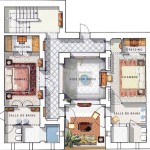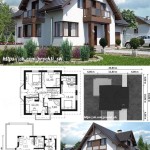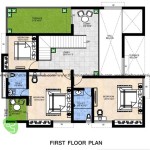Essential Aspects of Standard House Plans
Standard house plans provide a cost-effective and efficient solution for constructing a home. These plans, developed by experienced architects and engineers, offer a wide range of options to cater to diverse needs and preferences. Understanding the essential aspects of standard house plans is crucial for making informed decisions and tailoring the design to specific requirements.
Plan Selection:
The first step in utilizing standard house plans is plan selection. Numerous websites and databases offer a vast collection of plans, ranging from traditional to contemporary styles. Consider factors such as the number of bedrooms and bathrooms, square footage, and desired architectural features. Thoroughly review the plans and consult with a professional to identify the best option for your lifestyle and budget.
Modifications and Customization:
While standard house plans provide a solid foundation, they often require modifications to suit individual preferences and site conditions. Architects can adjust room sizes, alter the layout, and incorporate specific design elements. Customization allows for tailoring the plan to the unique characteristics of the building site, such as topography and orientation. It also ensures the home aligns with personal taste and functional needs.
Plan Reading:
Understanding how to read a house plan is essential for visualizing the design and communicating effectively with contractors. House plans typically consist of floor plans, elevations, and sections. Floor plans depict the layout of each level, while elevations show the exterior appearance from different angles. Sections provide vertical cuts through the structure, displaying the relationship between different levels and revealing interior details.
Foundation and Framing:
The foundation and framing are crucial structural components of any house. Standard house plans specify the type of foundation required, such as a slab-on-grade, crawl space, or basement. They also provide details on framing materials, including lumber dimensions and spacing. These specifications ensure the structural integrity and stability of the building.
Mechanical, Electrical, and Plumbing (MEP) Systems:
MEP systems are essential for the functionality and comfort of a home. Standard house plans include schematics for electrical wiring, plumbing pipes, and heating, ventilation, and air conditioning (HVAC) systems. These plans provide guidance on the placement of outlets, fixtures, and equipment, ensuring efficient operation and adherence to building codes.
Energy Efficiency:
In today's environmentally conscious world, energy efficiency is a key consideration in home design. Standard house plans often incorporate features that enhance energy performance, such as insulation, efficient windows, and Energy Star-rated appliances. These measures reduce energy consumption, lower utility bills, and contribute to a sustainable living environment.
Conclusion:
Standard house plans offer a multitude of benefits for homeowners and builders alike. They provide cost-effective solutions, allow for customization, and facilitate clear communication during construction. Understanding the essential aspects of these plans empowers individuals to make informed decisions, customize the design to their specific needs, and ensure the successful completion of their dream home.

Standard House Plan Collection Engineering Discoveries Duplex Plans Unique Three Bedroom

Standard House Plan Collection Engineering Discoveries Apartment Floor Plans 2 Bedroom

Floor Plan Standard Bungalow Plans House

How To Read A Floor Plan With Dimensions Houseplans Blog Com

Modular House Plans Modularhomeowners Com

12 Examples Of Floor Plans With Dimensions

Standard House Plan Collection Engineering Discoveries Simple Plans Single Y Town

Standard Individual House Plan In M Scientific Diagram

Standard House Plan Collection Engineering Discoveries Unique Plans Small Floor

Floorplanning Propertydigital








